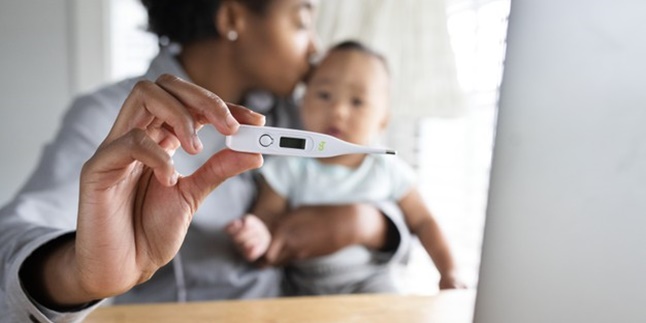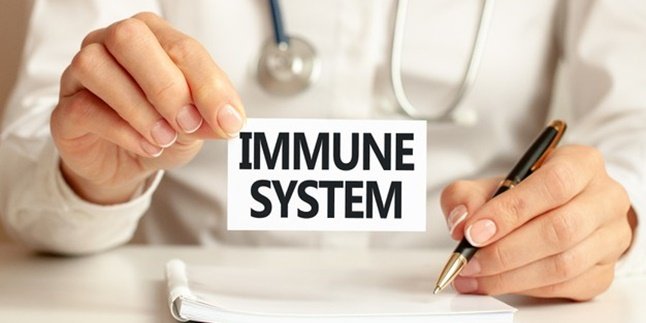Kapanlagi.com - As parents, you need to know first aid for children's fever. Because fever in children is a common thing and often occurs in children and babies aged 12-18 months. Therefore, you are required to be careful and alert, as well as accustomed to the independent steps that need to be taken at home.
Because children are still in the phase of developing their own immune system, an increase in body temperature is a common occurrence. However, the concern that arises every time a child has a fever cannot be denied. So worried, parents usually panic suddenly and don't miss out on first aid for fever in children.
However, with proper handling, you can help your child avoid complications due to fever. Well, to increase awareness, here is some information about first aid for children's fever taken from several sources that you need to pay attention to. Especially if the fever experienced does not improve and is accompanied by other symptoms.
1. Measuring Body Temperature
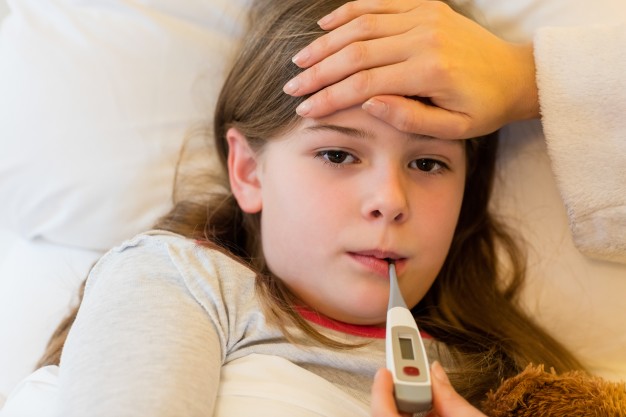
Illustration (Credit: Freepik)
To know for sure whether a child is experiencing a fever or not, you need to measure their body temperature. You need to use a thermometer, not just touch their forehead or body with your hand. If the body temperature reaches 38 degrees Celsius or higher, it means you need to immediately provide first aid to a feverish child. There is no need to worry excessively as it can cause unnecessary panic.
You will know when to measure with a thermometer. If the child appears more lethargic, cries or fusses frequently, restless, has difficulty sleeping, and refuses to eat or drink, it is possible that the child is experiencing a fever. Therefore, you need to observe the child every day.
2. Bathe with Warm Water and Maintain Room Temperature
During a fever, a child can still bathe as long as they use warm water. This needs to be noted because bathing a child with cold water can increase their body temperature. This can cause the child to feel uncomfortable and shiver due to the cold.
In addition, the first aid for a feverish child that you need to do is to maintain the room temperature to remain cool and comfortable for the child. If possible, use an air conditioner. You can also use a fan with a slow rotation. Avoid directing the fan or AC towards the child's body directly as it can make the child feel cold.
3. Provide Fluid Intake
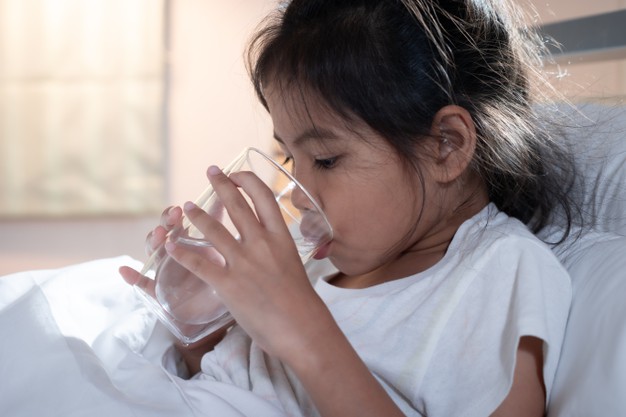
Illustration (Credit: Freepik)
Because the child already appears weak and has difficulty eating when feverish, you need to provide first aid to a feverish child by giving them fluid intake. Fluid intake is very important because during a fever, the child's body quickly loses and depletes water due to sweating and increased urination.
Not to mention if the fever is accompanied by vomiting and diarrhea, the water in the child's body will be lost even faster. You need to provide fluid intake, whether in the form of warm drinks or normal temperature water. It is even better if you also give them electrolyte drinks that contain ions because the body needs it.
Not only drinks, you can also give them juice, chicken soup, or other foods that they like to stimulate their appetite. If this is neglected, there are several dehydration symptoms that may endanger the child's condition and worsen the fever they are experiencing. Dehydration symptoms include reduced frequency of urination, crying without tears, dry mouth, and refusal to drink anything.
In addition to drinks, there are cooling foods such as yogurt and ice cream. You can give these foods to older children. Besides helping to prevent dehydration, these types of foods can help cool the body from the inside.
4. Pay Attention to Fever Relief Medication
The first aid for a child with a fever can be done by giving fever-reducing medication if necessary. Before giving medication such as paracetamol, you need to make sure that the dose given is low according to the doctor's instructions. The dose is adjusted based on the child's age, weight, and usage instructions stated on the medication packaging.
As a note, you are not allowed to give other medications, such as flu medicine, antibiotics, or other fever-reducing drugs without a doctor's prescription. Another important thing to note is that you are not allowed to give paracetamol to infants under two months old without monitoring from a doctor.
5. Apply a Compress

Illustration (Credit: Freepik)
As a form of first aid for a child with a fever, you can prepare a cloth soaked in water to apply as a compress. You can use lukewarm or slightly warm water, but make sure that the temperature is not too cold or hot. You can place the compress on the forehead, chest, armpits, and stomach of the child while sleeping or lying down. Leave the cloth on for 20-30 minutes on one part of the child's body.
The warm water in the cloth will be absorbed directly into the body's core, helping to automatically reduce the child's fever. Don't forget to change the compress when it starts to dry or feels hot. In addition, regularly measure the temperature every 1-2 hours after applying the compress to assess its effects.
6. Let Your Child Sleep Peacefully
Fever is usually caused by viruses and bacteria that attack the immune system. Therefore, you need to ensure that your child gets enough rest. As a first aid for a feverish child, making them sleep as comfortably and peacefully as possible can provide many benefits.
Children can replenish the energy expended by the immune system to fight infections. The stress caused by feeling unwell can also be reduced when the child falls asleep. In addition, the child's body will have the opportunity to repair and replenish cells in the body, including white blood cells that have a vital function in fighting viruses and bacteria in the body.
7. Avoid Thick Clothes or Blankets
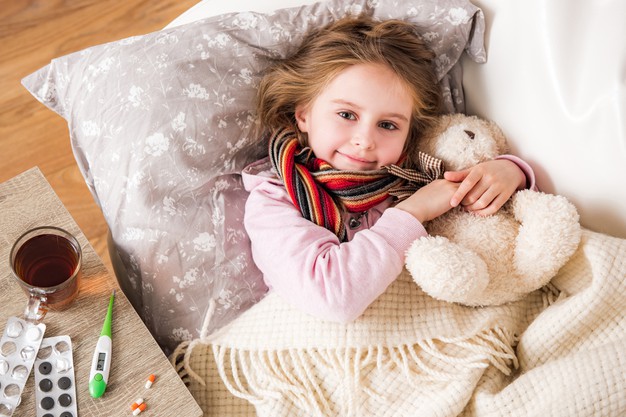
Illustration (Credit: Freepik)
When feverish, it is best to avoid thick clothing or blankets for your child to wear. When wearing thick clothing or blankets, their body will feel even hotter, making it more difficult for the fever to subside. You can choose comfortable cotton clothes as a form of first aid for a feverish child.
In addition to being comfortable, cotton clothes absorb their sweat. If the child feels cold or shivery, you can also choose a thin blanket for them.
8. Fever Symptoms to Watch Out For
In addition to the information above, you also need to pay attention to symptoms that may arise during a fever. Especially if the first aid you have done for a feverish child does not have a significant impact, you need to immediately take the child to the doctor for further examination.
Some symptoms that you need to watch out for when the fever does not improve include:
1. Dehydration, such as vomiting, dry mouth, refusal to eat or breastfeed, and decreased urination to the point where the child appears very weak.
2. Seizures.
3. Fainting or appearing drowsy more often.
4. Paleness, difficulty breathing, and appearing bluish.
Those are some information about first aid for a feverish child and symptoms that you need to watch out for. When the condition does not improve for two days or worsens, immediately take the child to the doctor for more serious treatment.
(Source: Halodoc.com, Alodokter.com)
(kpl/ans)
Disclaimer: This translation from Bahasa Indonesia to English has been generated by Artificial Intelligence.
